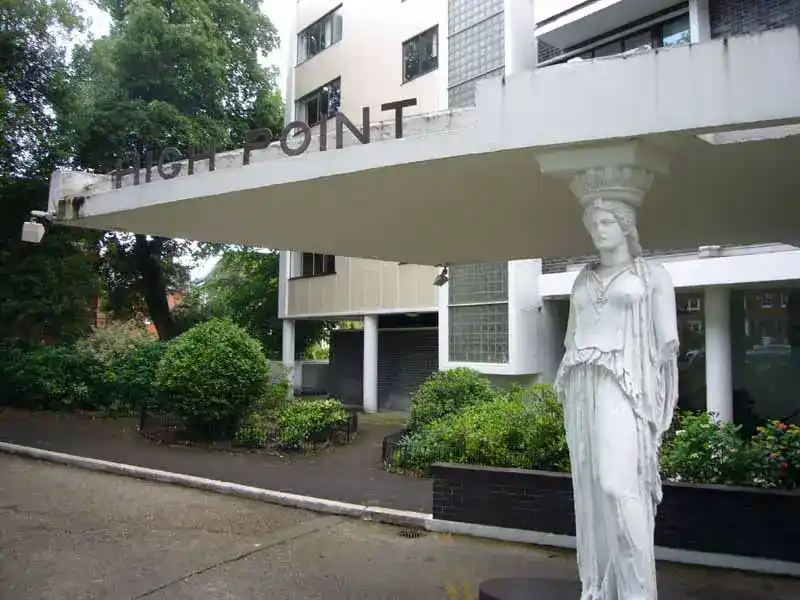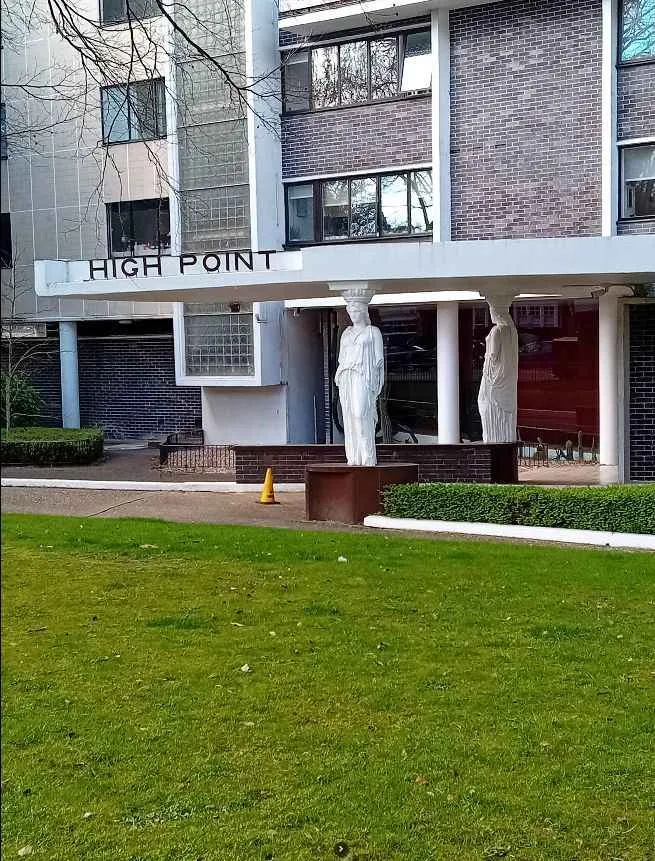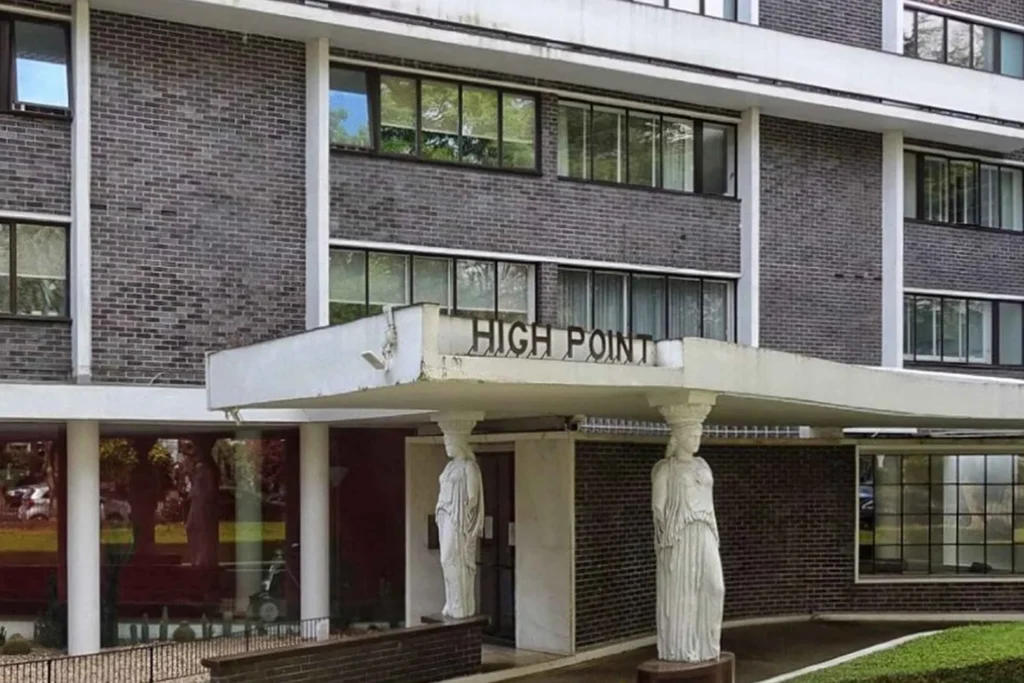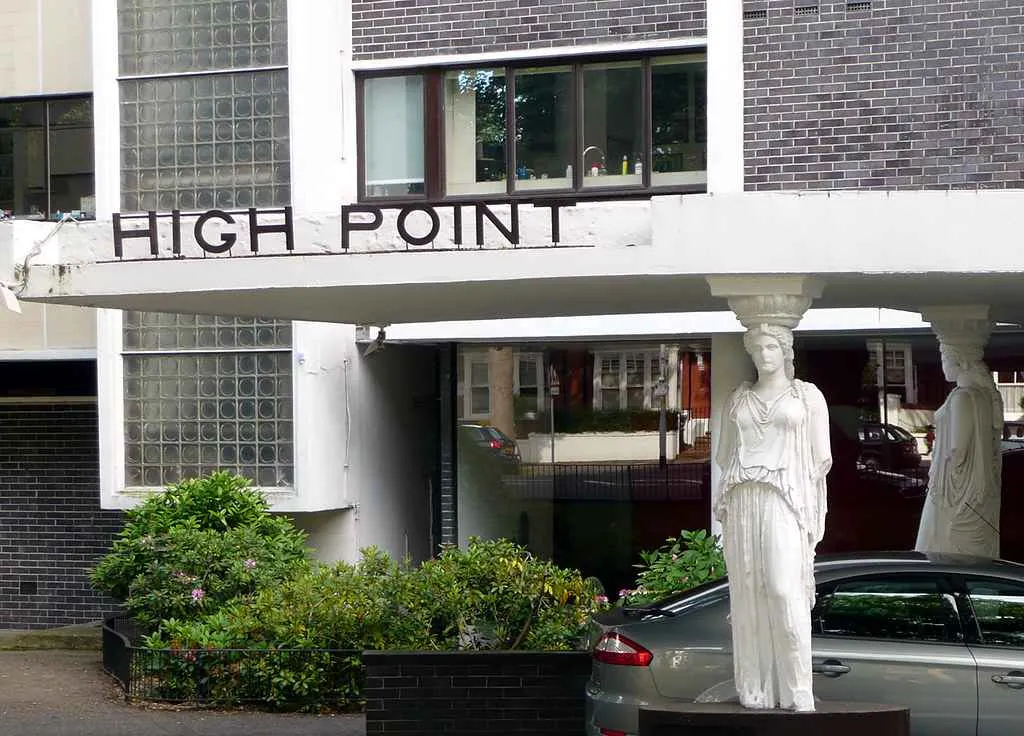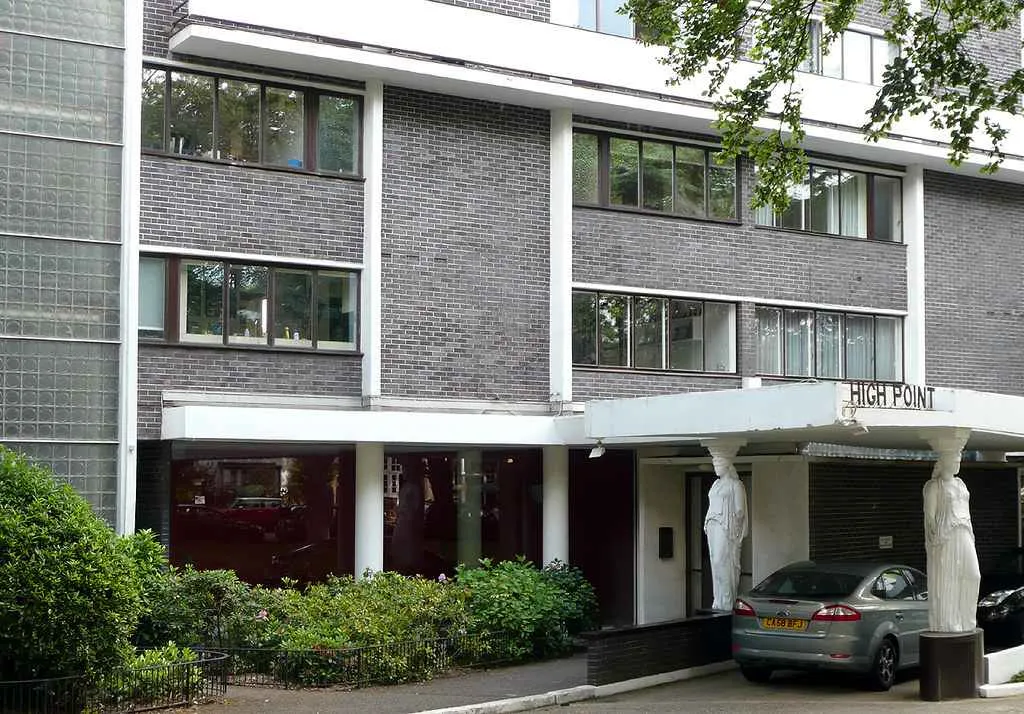At the entrance of Highpoint II, a modernist building constructed in the 1930s atop Highgate Hill in London, two sculpted female figures draw the attention of those who arrive. Dressed in traditional robes, these caryatids replace conventional columns and appear to support the front porch. Their presence is strikingly out of place in a rationalist, austere building designed by architect Berthold Lubetkin, known for his loyalty to the modernist style.
A Deliberate Contradiction
Modern architecture in the 20th century almost entirely rejected classical ornamentation. Within that context, the use of caryatids—figures typical of Greek architecture—was considered virtually anathema. Lubetkin’s choice, then, stands out as a bold departure from the principles of his own school. Even more so considering that the sculptures were direct replicas of the famous caryatids from the British Museum, themselves taken from the Erechtheion on the Acropolis of Athens.
This decision was no accident. On one level, it has been interpreted as an ironic response to criticism from local residents, who viewed his building as a modernist intrusion among Victorian and Georgian houses. But the reasons likely go far beyond architectural sarcasm.
More Than an Architectural Joke
According to historian Deborah Lewittes, author of an in-depth study of Highpoint II, the caryatids conceal a deeply autobiographical and political meaning. Lubetkin rarely spoke of his past. Born in Russia to a Jewish family, he had witnessed the rise of antisemitism across Europe. Even in England, which offered greater safety, he encountered a socially hostile climate toward foreigners and Jews. He hid his Jewish heritage—even from his own children.
Lewittes argues that these classical figures, placed so deliberately “out of place,” represent an act of silent resistance. A kind of “vocal response to the demand to remain silent—as a Jew and as a modernist—in a society that hated both.”
A personal discovery reinforces this interpretation: Lubetkin’s parents died in Auschwitz, and almost nothing remained of their lives after the war. But his daughter, Louise Kehoe, uncovered the truth about her father’s past only after his death. In her memoirs, she recounts finding a photograph he had taken of his parents’ bombed-out home in Warsaw. Amid the rubble, destroyed caryatids lay buried.
Though not strictly an act of nostalgia, the personal resonance is undeniable.
Architecture as Symbol
The caryatids of Highpoint II are not mere decoration—they tell a layered story that intertwines architecture with identity, trauma, and irony. In the midst of a functional, modern building, they evoke a tragic and defiant past, standing silently as witnesses to a torn Europe.
To some, they may seem a joke. To others, an intellectual wink. But for those who know the story of their creator, these caryatids speak more powerfully in silence than any architectural manifesto ever could.
